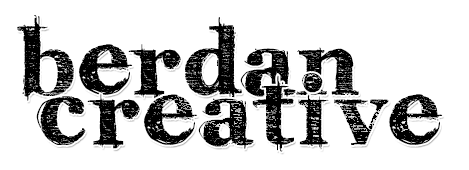#Banff2015 in Review
It started with an application. Women in Communications and Technology (WCT)—an organization that connects women to development opportunities and each other—was offering one member a free pass to the Banff World Media Festival, which covered the “Global Content Creation & Monetization Market." Can you guess who the lucky winner was?
Even if I hadn’t learned a thing or made any great connections, the trip would’ve been well worth it just to spend a few days in that mountain air. But it turns out the festival had plenty to offer.
Common themes in a lot of the sessions I attended echoed the conversations we consistently have in the digital world:
Consider a specific audience.
Involve that audience.
Make human connections.
Create good content that is meaningful to those humans.
Technology is not the revolution...
…it enables the revolution. That was one of my favourite lines from the Canadian Association of Film Distributors and Exporters’ (CAFDE) Tom Perlmutter’s talk about public policy change for the digital world, and it echoed through most of the discussions I had and heard. We tend to hear a lot about the end of journalism with the advent of digital distribution and user-generated content, but The New York Times’ Rebecca Howard told a different story about a “paper” that is riding the digital wave with 50% of the paper’s audience viewing content on mobile, and a Pulitzer-winning video series on the Ebola outbreak. While the Canadian Media Fund noted a drop in attention spans from 12 seconds down to 8, Michael Carrington of Zodiak Kids Studios actually reported that kids were actually shifting from watching only short snippets to full episodes on the tablets to which they’re constantly attached.
There is no doubt that technology has changed many things, from how we discover to how we consume content. Facebook’s Sharon Mussalli noted that 76% of American Facebook users say they discover the videos they watch on that platform… but that’s not necessarily where they continue watching. (Side note for the Harry Potter fans in the house: Facebook’s video autoplay feature is a nod to the Daily Prophet’s interactive stories.) The digital world offers more choice than we have ever had, which means more noise to cut through, but our digital connections also make it easier than ever before to reach people around the globe.
You know what hasn’t been changed by technology, though? Humans. From Chris Malone’s talk about the two factors that influence behaviour and loyalty (warmth and competence) to Mark Simon’s assertion that only two things matter in a pitch meeting (character and story), there are some fundamentals that have been consistent for as long as we’ve been around. AwesomenessTV’s Chief Digital Officer, Kelly Day, summed up the human vs. tech reality noting that what (many) teen girls like (cute boys, fashion, music, etc.) hasn’t changed much in generations, but what has changed is how they consume and how they connect. She seems to know what she’s talking about. Her most compelling example was Expelled, featuring Vine star (yep, Vine star) Cameron Dallas, which was the top movie on iTunes upon release, thanks in part to the star’s already massive community following.
Women in...
I’m grateful to WCT for sending me to the Festival. I mean, I got to eat lunch with Jason Priestley (okay, not exactly, but we were on the same patio), listen to Archer’s Adam Reed talk about the leap of faith FX took on his hilarious animated series, and heap praise on the stars of my favourite YouTube series, Convos with my 2-Year-Old. More importantly, though, I was inspired by some truly remarkable women doing great work.
The Honourable Shelly Glover talked about the importance of investing in Canadian talent and new technology. Yahoo’s Anna Robertson shared why she left a promising broadcasting career—she was on her way to an executive producer title–to head up Yahoo’s video division, which now delivers a range of content from Community to Katie Couric. I lost count of the impressive women I met who were running their own businesses and creating their own content, from film to branded series to brand new TV shows.
One of the most enjoyable sessions I attended was the AMP Accelerator, a competition from Shaftesbury’s digital media division, Smokebomb. The finalists in the competition were all remarkable young women who were pitching YouTube series ideas for Millennial women. As Smokebomb Creative Director Jay Bennett remarked, the name of the game is narrowcast (vs. broadcast), and each finalist had a very specific niche within that broader category, from young Asian women to sassy book lovers to “badass urbanites.”
These ladies are killing it! Proud seeing #TheAmp2015 finalists @BanffMedia@ShaftesburyTV@Smokebomb_Ent#BANFF2015pic.twitter.com/X58VTQrruv
— Emily Claire Afan (@EmilyClaireAfan) June 9, 2015
//platform.twitter.com/widgets.js
There’s No Place Like Home
For me, the mark of a great conference is how energized and creative I feel when I’m done. I was inspired by some great talks, and loved hearing the conversations—from policy change to market trends to the fun and frivolous—about the real opportunities that the digital world offers up. While there is more noise between TV and the Web, there is also more opportunity to connect meaningfully with our tribes. We don’t have to reach the masses, but rather connect authentically with the people who care about the same things we do, in order to make a difference (and a buck, for that matter). Moreover, we all have a story, and better means to tell and spread it than ever before.

